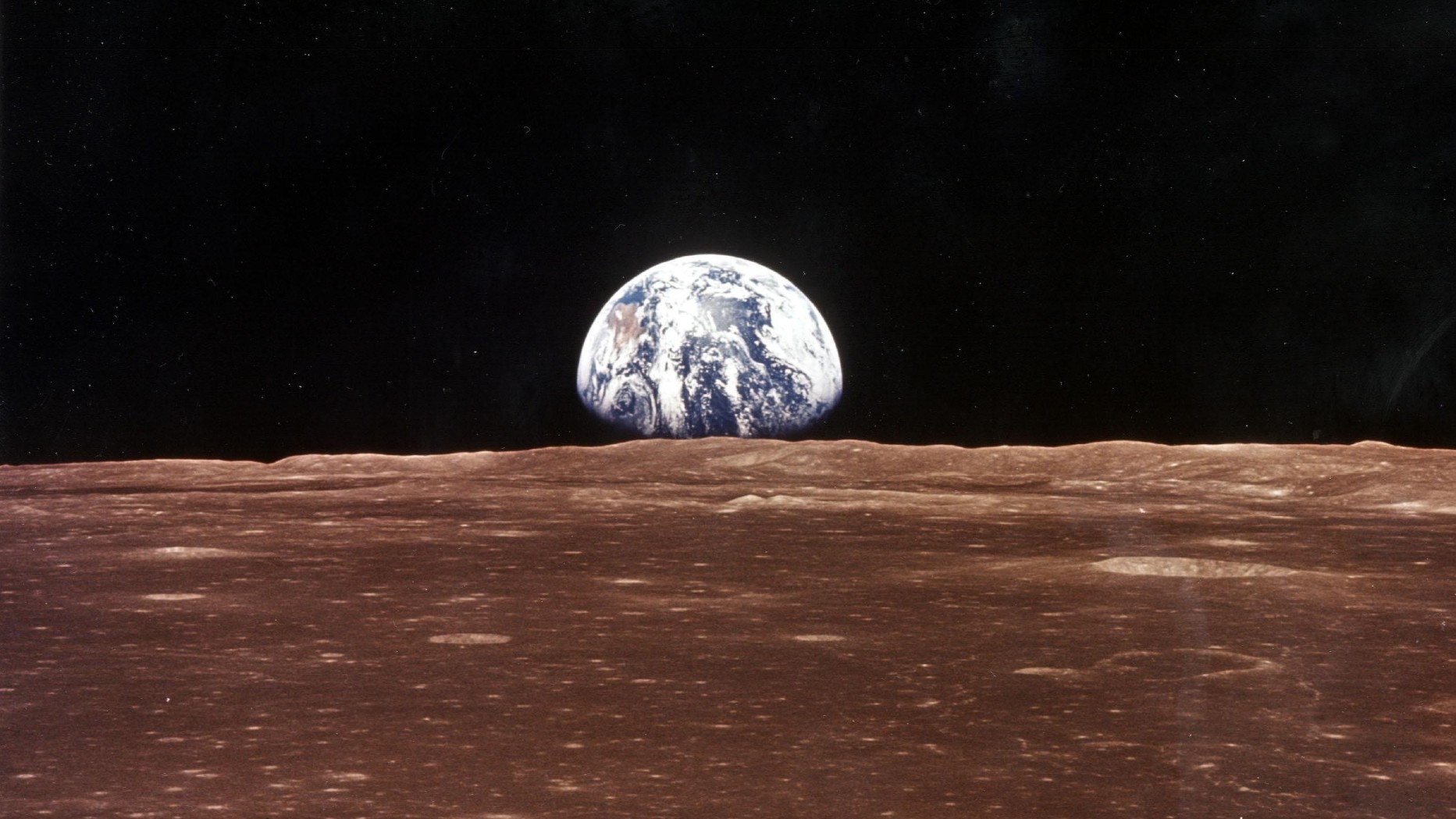China discovers rare lunar crystal and nuclear power source on near side of the moon
It's not aliens; It's an incredibly rare source of helium.

Researchers in China have discovered a new type of crystal nestled among the volcanic debris of the near side of the moon, as well as a potential fuel source that could help revolutionize the production of clean and efficient energy on Earth.
The small, transparent crystal — named Changesite-(Y), after the Chinese moon goddess Chang'e — is more than a billion years old and is as wide as a human hair, according to Global Times, a Chinese state-run news site. In early September, researchers with the International Mineralogical Association confirmed that the tiny moon crystal has a never-before-seen composition and is related to other minerals found only on the moon or in meteors.
A new mineral, Changesite-(Y), was discovered from the moon samples retrieved by #China's Chang'e-5 probe, making China the third country to discover a new mineral on moon, China Atomic Energy Authority said on Friday. pic.twitter.com/gieIWN8SMgSeptember 9, 2022
Researchers collected the crystal among roughly 4 pounds (1.8 kilograms) of lunar rocks in 2020 during China's Chang'e-5 mission (also named for the aforementioned moon goddess). These rocks were the first lunar samples to be taken to Earth since 1976, and the first lunar samples ever collected by China, according to Vice. The Changesite-(Y) crystal's discovery marks the sixth new mineral to be identified on the moon, and the first identified by China; the five previous discoveries were made by either the United States or Russia.
However, the teeny crystal was not the only remarkable find in the Chang'e-5 moon rock haul. Among the roughly 140,000 lunar particles analyzed, scientists also found traces of helium-3 — a version of the element helium that is exceptionally rare on Earth but is believed to be abundant on the moon.
Related: The moon is rusty, and it’s likely Earth's fault
For decades, scientists have been intrigued by helium-3 as a potential source of fuel for nuclear fusion — a type of energy production that occurs when two light atoms merge into a heavier one under extreme heat and pressure. Nuclear fusion reactions occur naturally in the interiors of stars, but humans have yet to come up with a fusion reactor capable of creating more energy than was put into it.
Helium-3 is a particularly promising fuel source for fusion as it produces significantly less radiation and nuclear waste than other elements do, according to the European Space Agency (ESA). The element does exist on Earth in relatively small quantities, but helium-3 is thought to be much more abundant on the moon, where it has been deposited directly onto the lunar soil for billions of years by solar wind, the ESA said.
Sign up for the Live Science daily newsletter now
Get the world’s most fascinating discoveries delivered straight to your inbox.
Even with no viable reactors to put it in, helium-3 has nevertheless ignited a lunar resource race. Multiple space-faring nations and private companies have expressed interest in mining the moon for its helium-3, including the U.S. and China. Chang'e-5's discovery of a new helium-3 deposit on the near side of the moon could further stoke the global race to plunder the moon's mineral resources.
Originally published on Live Science.

Brandon is the space/physics editor at Live Science. His writing has appeared in The Washington Post, Reader's Digest, CBS.com, the Richard Dawkins Foundation website and other outlets. He holds a bachelor's degree in creative writing from the University of Arizona, with minors in journalism and media arts. He enjoys writing most about space, geoscience and the mysteries of the universe.









